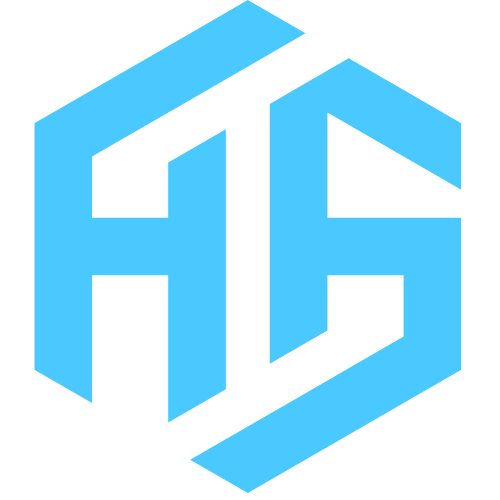Are you curious about how blockchain is revolutionizing higher education? Discover the innovative ways this technology is being used to enhance student data security, streamline credential verification processes, and improve academic records transparency. With blockchain, universities can now facilitate efficient transcript management, enable secure digital identity verification, and promote decentralized learning platforms. Join us as we explore the transformative impact of blockchain in higher education.
Enhancing Student Data Security
To enhance student data security, blockchain technology provides a secure and decentralized system for storing and accessing sensitive information. With the increasing concern for data privacy and the need for fraud prevention in higher education, blockchain offers a promising solution.
Traditional methods of storing student data, such as centralized databases, are vulnerable to security breaches and unauthorized access. Blockchain, on the other hand, ensures data privacy by using encryption techniques and distributed ledger technology. Each transaction or piece of information is recorded in a block, which is then linked to the previous block, forming a chain of data. This decentralized nature of blockchain makes it nearly impossible for hackers to alter or manipulate the information.
Moreover, blockchain’s transparency and immutability provide an additional layer of security. Every transaction on the blockchain is visible to all participants, creating a transparent and auditable system. Any attempt to tamper with the data would require consensus from the majority of the network, making fraudulent activities highly unlikely.
Streamlining Credential Verification Process
Simplify credential verification by utilizing blockchain technology in higher education. Blockchain offers a decentralized and immutable ledger that can streamline the process of verifying credentials. One of the key advantages of blockchain is its ability to automate credential authentication. With traditional methods, verifying credentials can be a time-consuming process that involves manual checks and communication with multiple institutions. Blockchain technology enables the creation of a secure and transparent platform where educational institutions can store and share credentials. By digitizing and storing credentials on the blockchain, institutions can eliminate the need for paper-based verification, reducing the risk of fraud and increasing efficiency.
With blockchain, credentials can be easily accessed and verified by authorized parties. This eliminates the need for individuals to request physical copies of their credentials and send them to potential employers or other institutions. Instead, the verification process can be done instantly and securely through the blockchain network. As a result, the time and cost associated with verifying credentials can be significantly reduced.
Moreover, blockchain technology ensures the integrity and authenticity of credentials. The decentralized nature of the blockchain makes it difficult for credentials to be tampered with or falsified. Each credential is securely stored and linked to the issuing institution, making it easy to verify its authenticity.
Improving Academic Records Transparency
Improve transparency in academic records by leveraging blockchain technology in higher education. Blockchain adoption in the education sector has the potential to revolutionize the way academic records are stored and verified. By utilizing decentralized credentials on a blockchain, institutions can ensure the integrity and transparency of student records, making them easily accessible and tamper-proof.
Here are two ways in which blockchain technology can contribute to improving academic records transparency:
- Immutable Record Keeping: Blockchain’s decentralized nature ensures that academic records cannot be altered or tampered with, providing a reliable and transparent record-keeping system. Each record is securely stored in a block, linked to previous blocks, creating an unchangeable and auditable chain of information. This eliminates the need for intermediaries and minimizes the risk of falsification or fraud.
- Efficient Verification Process: With blockchain, credential verification becomes faster and more efficient. Instead of relying on manual processes or third-party verification services, educational institutions can use blockchain to instantly verify the authenticity of academic records. This reduces administrative burden, streamlines the verification process, and enhances trust among employers, educational institutions, and students.
Facilitating Efficient Transcript Management
To facilitate efficient transcript management, blockchain technology can be utilized to digitalize academic records, streamlining the verification process and enhancing data security. By digitizing transcripts and storing them on a blockchain, institutions can eliminate the need for physical paperwork and manual verification procedures, saving time and resources. The decentralized nature of blockchain ensures the immutability and transparency of student records, preventing unauthorized access and manipulation of data.
Digitalizing Academic Records
Your academic records can be digitalized using blockchain technology, ensuring efficient management of your transcripts. Blockchain provides a secure and immutable platform for storing and verifying academic records, eliminating the need for paper-based transcripts and reducing administrative burdens. Here are two ways blockchain is revolutionizing the digitalization of academic records:
- Digitalizing student portfolios:
- Blockchain enables students to create digital portfolios that showcase their achievements, certifications, and skills in a transparent and tamper-proof manner.
- These portfolios can be accessed by potential employers, educators, and other relevant parties, facilitating a more holistic evaluation of a student’s capabilities.
- Blockchain in student recruitment:
- Educational institutions can use blockchain to verify the authenticity of academic records during the student recruitment process.
- This ensures that only qualified applicants are admitted and helps prevent fraudulent applications.
Streamlining Verification Process
Blockchain technology streamlines the verification process for academic records, facilitating efficient management of transcripts. By leveraging the immutable and decentralized nature of blockchain, educational institutions can ensure the authenticity and integrity of student records, eliminating the need for manual verification and reducing administrative burdens.
One of the key benefits of using blockchain for transcript management is the enhanced data verification capabilities it offers. With traditional paper-based systems, verifying the accuracy of academic records can be time-consuming and prone to errors. However, by storing transcripts on a blockchain, educational institutions can provide real-time access to verified and tamper-proof records, ensuring that only authorized individuals can make changes to the data.
To illustrate the benefits of blockchain in streamlining the verification process, consider the following table:
| Traditional Verification Process | Blockchain Verification Process |
|---|---|
| Manual verification of paper transcripts | Real-time access to verified and tamper-proof records |
| Time-consuming and prone to errors | Efficient and accurate verification process |
| High administrative burden | Reduced administrative workload |
| Limited transparency and traceability | Enhanced transparency and traceability |
Through the use of blockchain technology, educational institutions can streamline the verification process for academic records, resulting in more efficient transcript management and improved data verification.
Enhancing Data Security
Enhance the security of your academic records by utilizing blockchain technology, which facilitates efficient management of transcripts. Blockchain’s decentralized nature and cryptographic algorithms provide robust data privacy and fraud prevention mechanisms. Here’s how blockchain enhances data security in higher education:
- Immutable and tamper-proof records: Blockchain creates a permanent and unchangeable record of all transactions, ensuring the integrity of academic records and preventing unauthorized modifications.
- Secure data sharing: Blockchain enables secure and controlled sharing of academic records, ensuring that only authorized parties have access to sensitive student information, thereby enhancing data privacy.
- The use of public and private keys ensures that only authorized individuals can access and verify academic records.
- Smart contracts can automate the verification process, eliminating the need for intermediaries and reducing the risk of fraud.
Enabling Secure Digital Identity Verification
To enable secure digital identity verification in higher education, institutions can utilize blockchain technology. Blockchain provides a decentralized authentication system that ensures the integrity and security of identity credentials. By leveraging blockchain’s decentralized nature, institutions can eliminate the need for a centralized authority to verify and authenticate identities. Instead, multiple nodes in the blockchain network can validate and confirm the authenticity of identity credentials, making it virtually impossible to tamper with or forge them.
One of the key advantages of using blockchain for digital identity verification is the concept of immutable credentials. Once an identity credential is recorded on the blockchain, it becomes a permanent and unalterable record. This means that any changes or updates to the credential can only be made through a consensus mechanism agreed upon by the blockchain network participants. As a result, institutions can have complete confidence in the authenticity and accuracy of the identity credentials stored on the blockchain.
In addition to enhancing security, blockchain technology also offers increased efficiency and convenience in digital identity verification. With blockchain, institutions can streamline the verification process by providing a single source of truth for identity credentials. This eliminates the need for individuals to repeatedly submit their credentials to different institutions, reducing administrative burdens and improving the overall user experience.
Enhancing Collaboration in Research and Development
When it comes to enhancing collaboration in research and development, blockchain technology offers several key benefits. First, it enables secure data sharing among researchers, ensuring that sensitive information is protected and only accessible to authorized parties. Second, blockchain can improve the management of intellectual property by providing a transparent and immutable record of ownership and usage rights. Lastly, the use of blockchain can streamline funding processes by facilitating the efficient and transparent distribution of funds, reducing administrative burdens and increasing accountability.
Secure Data Sharing
Collaborate more efficiently with colleagues in research and development by leveraging the secure data sharing capabilities of blockchain technology. Blockchain’s decentralized and immutable nature ensures data privacy and integrity, making it an ideal solution for enhancing collaboration in research and development. Here’s how blockchain enables secure data sharing:
- Data Privacy: Blockchain’s encryption techniques and decentralized architecture protect sensitive research data from unauthorized access. Access to data can be controlled through smart contracts, ensuring that only authorized individuals can view or modify the data.
- Data Integrity: Blockchain’s tamper-proof nature guarantees the integrity of research data. Each transaction is recorded on multiple nodes, making it practically impossible to alter or delete data without detection. Researchers can trust that the data they access is accurate and has not been tampered with.
Improved Intellectual Property
By leveraging the secure data sharing capabilities of blockchain technology, you can enhance collaboration in research and development and improve intellectual property rights. Blockchain provides a transparent and immutable ledger that can be used to timestamp and authenticate research findings, ensuring improved copyright protection. With blockchain, researchers can securely share their work, track ownership, and prove authorship, reducing the risk of plagiarism and intellectual property disputes. The decentralized nature of blockchain ensures that no single entity has complete control over the data, preventing tampering and unauthorized access. Additionally, smart contracts can be utilized to automate the licensing and distribution of intellectual property, streamlining the process and ensuring fair compensation for creators. By adopting blockchain technology, higher education institutions can foster a culture of trust, collaboration, and innovation while safeguarding intellectual property rights.
Streamlined Funding Processes
To enhance collaboration in research and development, streamline funding processes using blockchain technology. Blockchain can revolutionize the way universities handle financial transactions, making them more efficient and transparent. Here’s how it can be achieved:
- Streamlined payment systems: By implementing blockchain, universities can create a decentralized platform for managing payments. This eliminates the need for intermediaries, reduces transaction costs, and ensures faster fund transfers.
- Automated financial aid: Blockchain can automate the process of distributing financial aid to students. Smart contracts can be programmed to verify eligibility criteria and disburse funds accordingly. This reduces administrative burden, minimizes errors, and ensures timely disbursement of funds.
Promoting Decentralized Learning Platforms
One way to promote decentralized learning platforms in higher education is by allowing students to directly access and control their own academic records through blockchain technology. Decentralized assessment and blockchain-based accreditation can play a crucial role in this process. Traditional methods of storing and verifying academic records often involve intermediaries and central authorities. This can lead to inefficiencies, data breaches, and a lack of transparency. By leveraging blockchain technology, students can have complete ownership of their educational data, ensuring privacy and control.
Blockchain provides a secure and tamper-proof system for recording and verifying academic achievements. Each student’s records are stored in a distributed ledger, accessible only through their unique cryptographic keys. This eliminates the need for centralized databases and allows students to share their records securely with employers, institutions, and other stakeholders.
Moreover, decentralized assessment using blockchain can revolutionize the way students are evaluated. Smart contracts can be used to create self-executing and transparent assessment processes. This reduces the reliance on traditional centralized evaluation methods and enables real-time feedback and personalized learning experiences.



